
Lt. General José Antonio de la Caridad Maceo y Grajales was a Cuban general and second-in-command of the Cuban Army of Independence.
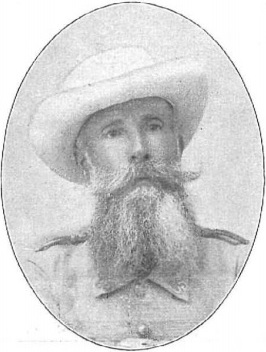
Joaquín Vara de Rey y Rubio was a Spanish military officer. He is best known for leading the tenacious defense of El Caney against a massively superior American force during the Spanish–American War.

Cruces is a municipality and town in Cienfuegos Province, Cuba. It is the home of the Mal Tiempo National Park which commemorates a battle in the 1895 War of Independence.

Juan Dionisio "Noni" Gil de la Rosa was a brigadier general in the Cuban Army of Independence, and fought in the Cuban War of Independence.
The Battle of El Jobito was a military event which took place on May 13 of 1895 in Oriente Province of Cuba, in the Cuban War of Independence.
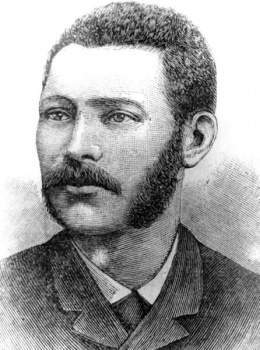
José Marcelino Maceo Grajales was a Cuban Independence Activist and patriot of the 19th Century.

Pedro Agustín Periquito Pérez Pérez, better known as Periquito Pérez was a Cuban independence political activist.

The Battle of Peralejo was a military confrontation between Cuban independence rebels, under the command of Major General Antonio Maceo against the forces of the Spanish Army, under the command of Captain General Arsenio Martínez Campos, which was part of Maceo's First Eastern Campaign during the Cuban War of Independence.

Agustín Cebreco Sánchez, was a Cuban major general and politician of the Mambí Army.
The Invasion from East to West took place on the island of Cuba, and began on October 22, 1895, in Mangos de Baraguá, in the former province of Oriente. It was organized and directed by Antonio Maceo Grajales and Máximo Gómez. The Liberation Army, guided by the firmness of taking the fight against Spanish colonialism to all corners of Cuba, starred in one of the most relevant events in Cuban history. In the midst of the "Cuban War of Independence", inspired by José Martí, that campaign responded to the old desire of the insurgent generals Maceo and Gómez. These launched the strategy of limiting the liberation struggle to the eastern territory of the Island, but rather extending it throughout the entire Cuban territory to force Spain to fight simultaneously in the six provinces that the country had at that time, in order to weaken it on all fronts.
The Battle of Iguará was a battle of the Cuban War of Independence which took place on December 13, 1895 in the Santa Clara Province, Cuba.
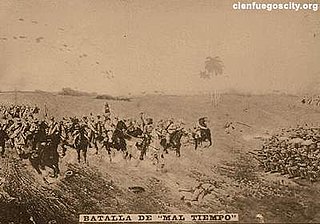
The Battle of Mal Tiempo was a battle of the Cuban War of Independence that took place on December 15, 1895, a few kilometers away from Cruces, Cienfuegos Province. In the battle, Mambises and Spanish forces faced each other, the former being victorious. This victory was considered one of the most important of the Invasion from East to West in Cuba, due to the political, military and economic consequences in favor of the independence activists.
The Battle of Coliseo was a group of military actions carried out in the surroundings of the town of the same name, Matanzas Province, Cuba on December 23, 1895 during the Cuban War of Independence.
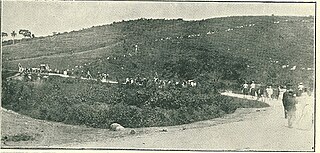
The Lanzadera Campaign was a significant part of the Cuban War of Independence as it was the next operation of the Mambises by Máximo Gómez to distract Spanish troops to him and avoiding their pressure on Antonio Maceo, who was able to continue to the West to complete the Invasion from East to West in Cuba. The campaign was considered to be one of skillful maneuvering, mobility and oversight as Gómez's vastly outnumbered 2,000 Mambises had achieved their goals with negligible losses against the 40,000 Spanish infantry which was commanded by Arsenio Martínez Campos, Sabás Marín and Valeriano Weyler.
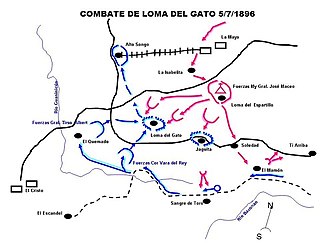
The Battle of Loma del Gato took place during the Cuban War of Independence on July 5, 1896 at Santiago de Cuba, Oriente Province. It is notable for the death of Mambí General José Maceo.
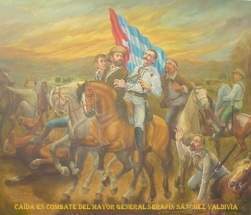
The Battle of Paso de las Damas was a battle of the Cuban War of Independence that took place on 18 November 1896 at the Santa Clara Province.
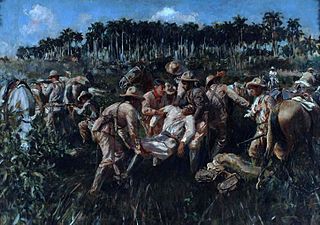
The Battle of San Pedro was a battle of the Cuban War of Independence that took place on December 7, 1896 within the vicinity of the farm of the same name. The battle occurred near the town of Punta Brava on the outskirts of Marianao, La Habana Province.

The La Reforma Campaign was a campaign of the Cuban War of Independence which was waged for 16 months with the Cuban forces under the command of Máximo Gómez against the Spanish forces under the command of Valeriano Weyler. Despite the Spanish outnumbering the Cuban forces by 40,000 to 600, Gómez's guerrilla warfare tactics as well as the weather caused over 40 Spanish soldiers to die each day throughout the campaign. His approach was to divide his forces into tiny guerrilla groups and fight alone with his General Staff while continuously moving.

Francisco de Borja Canella y Secades was a Spanish Divisional General during the 19th century. He was famously known as the "Hero of Sao del Indio" for his service during the Battle of Sao del Indio of the Cuban War of Independence and earned the Laureate Cross of San Fernando for his service there.

The Cuban Liberation Army, colloquially known as the Mambí Army was an insurgent army which was formed in the last third of the 19th century and fought for independence from Spain and the abolition of slavery. It first saw combat in the Ten Years' War (1868-1878) under the command of Carlos Manuel de Céspedes, Ignacio Agramonte, and Carlos Roloff. The independentists were decentralized and operated within their own regions autonomously of each other, until the Assembly of Guáimaro established the Republic-in-Arms of Cuba and the Liberation Army's command structure. After the Pact of Zanjón, a brief uprising called the Little War saw Major-Generals Calixto García and Antonio Maceo lead the Army of Liberation in another attempt at independence and the abolition of slavery, though unsuccessfully. Finally, during the War of Independence, the Liberation Army was once again organized to fight against the Spanish colonial government. The Liberation Army would reach its highest count of active members in the Spanish-American War, when an imminent Cuban-American victory caused hitherto anti-independence elites to join the Liberation Army. These recruits were nicknamed "Sunflowers" because they "point to where the sun is shining".















